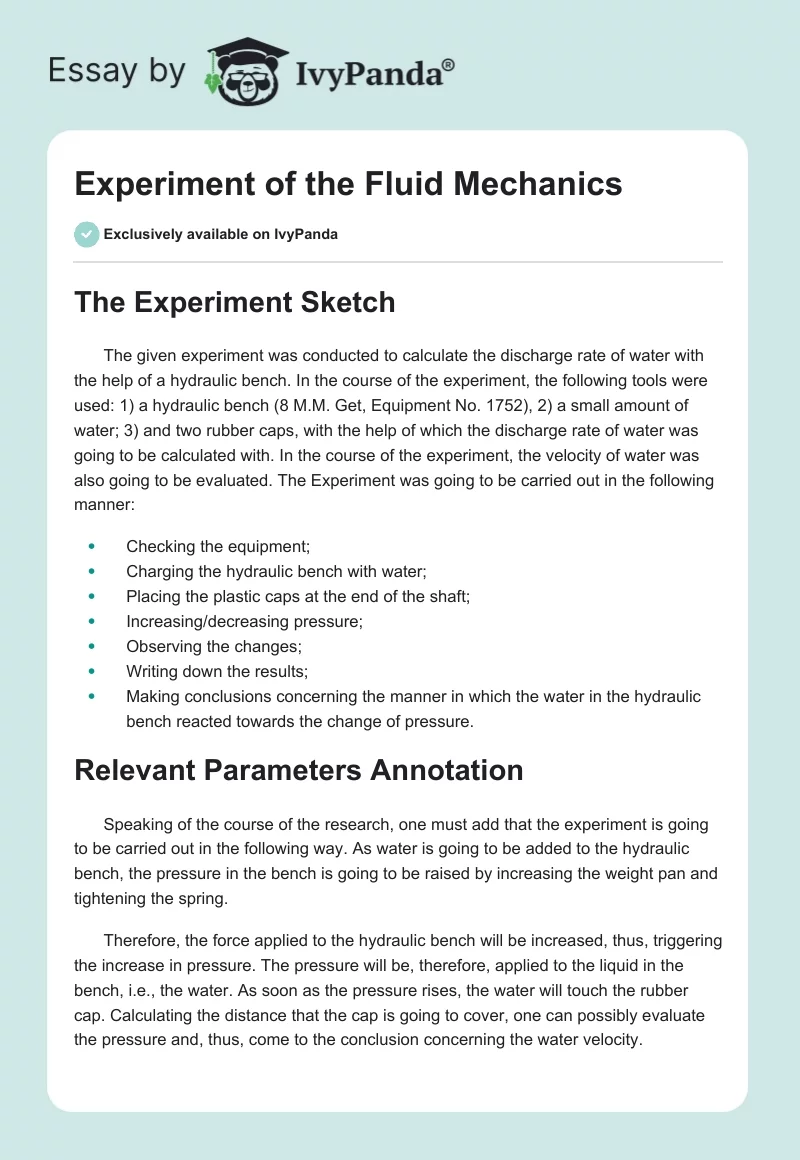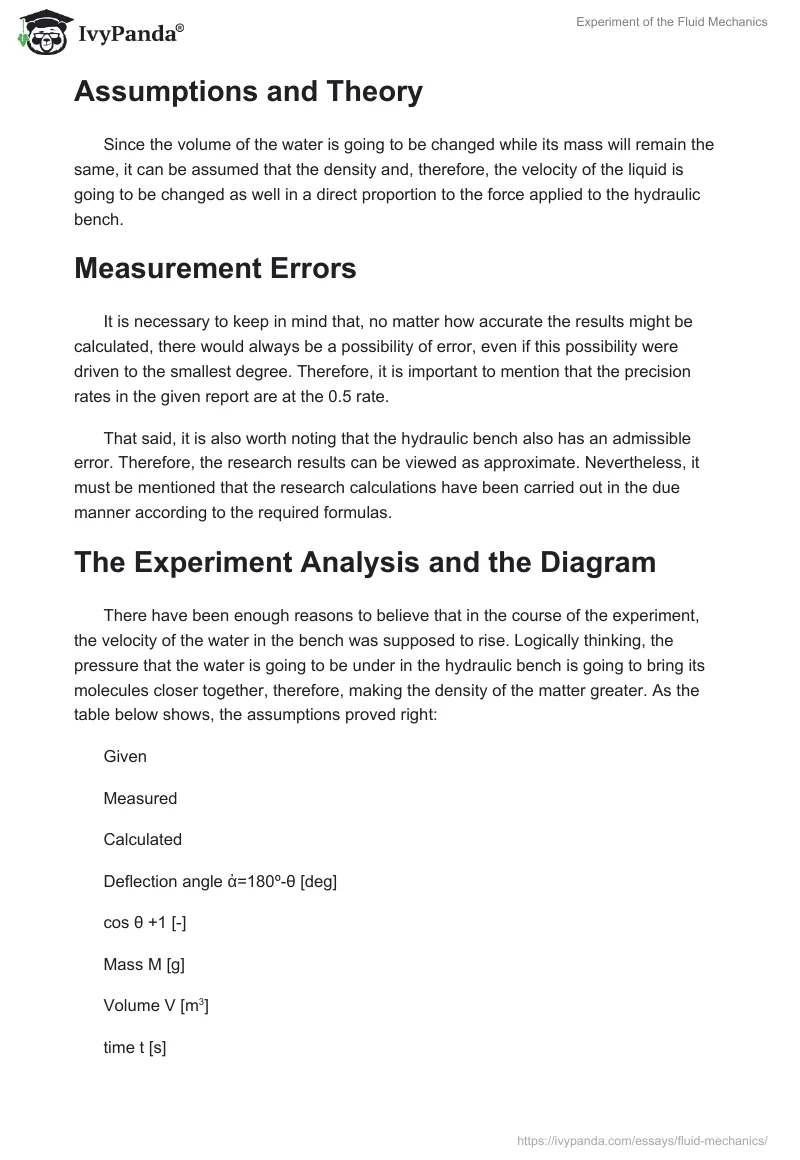The Experiment Sketch
The given experiment was conducted to calculate the discharge rate of water with the help of a hydraulic bench. In the course of the experiment, the following tools were used: 1) a hydraulic bench (8 M.M. Get, Equipment No. 1752), 2) a small amount of water; 3) and two rubber caps, with the help of which the discharge rate of water was going to be calculated with. In the course of the experiment, the velocity of water was also going to be evaluated. The Experiment was going to be carried out in the following manner:
- Checking the equipment;
- Charging the hydraulic bench with water;
- Placing the plastic caps at the end of the shaft;
- Increasing/decreasing pressure;
- Observing the changes;
- Writing down the results;
- Making conclusions concerning the manner in which the water in the hydraulic bench reacted towards the change of pressure.
Relevant Parameters Annotation
Speaking of the course of the research, one must add that the experiment is going to be carried out in the following way. As water is going to be added to the hydraulic bench, the pressure in the bench is going to be raised by increasing the weight pan and tightening the spring.
Therefore, the force applied to the hydraulic bench will be increased, thus, triggering the increase in pressure. The pressure will be, therefore, applied to the liquid in the bench, i.e., the water. As soon as the pressure rises, the water will touch the rubber cap. Calculating the distance that the cap is going to cover, one can possibly evaluate the pressure and, thus, come to the conclusion concerning the water velocity.
Assumptions and Theory
Since the volume of the water is going to be changed while its mass will remain the same, it can be assumed that the density and, therefore, the velocity of the liquid is going to be changed as well in a direct proportion to the force applied to the hydraulic bench.
Measurement Errors
It is necessary to keep in mind that, no matter how accurate the results might be calculated, there would always be a possibility of error, even if this possibility were driven to the smallest degree. Therefore, it is important to mention that the precision rates in the given report are at the 0.5 rate.
That said, it is also worth noting that the hydraulic bench also has an admissible error. Therefore, the research results can be viewed as approximate. Nevertheless, it must be mentioned that the research calculations have been carried out in the due manner according to the required formulas.
The Experiment Analysis and the Diagram
There have been enough reasons to believe that in the course of the experiment, the velocity of the water in the bench was supposed to rise. Logically thinking, the pressure that the water is going to be under in the hydraulic bench is going to bring its molecules closer together, therefore, making the density of the matter greater. As the table below shows, the assumptions proved right:
According to the calculations that have been carried out in the course of the research, the applied mass is in an inverse proportion to the time that it takes the water to push the caps up. The table below shows that there is a direct correlation between the water velocity and the mass of the weight, as well as between the mass of the weight and the distance that the caps spring to in the course of the experiment.
That said, it can be considered that the given experiment serves is a solid proof for the impact of pressure on liquid velocity. Even though water has a relatively great density (1000 kg/m3), it is still clear that, as long as sufficient pressure is applied, its velocity rises. Therefore, it can be assumed that in the environment where the pressure is below the norm, the water velocity is going to drop, since the distance between the water molecules grows, therefore, making the latter decrease the molecular bond.
Conclusions: Fluid Mechanics
Predictably enough, in the course of the experiment it turned out that the velocity of water depends greatly on the pressure, which the given amount of water is under at the moment. That said, it should also be mentioned that the deflection angle varied depending on the intensity and the numerical value of the force applied to the mass of water in the hydraulic bench.


